
Photo courtesy of Flickr user Son of Groucho.
Today’s blog post title is a play on the old saying “you can’t have your cake and eat it too.” In other words, once you’ve eaten the cake, you don’t have it anymore. Likewise, if you have a tree, you’ll need to use a lot of water which might run afoul of water restrictions. Or will it? Today’s post demonstrates that you can have healthy trees AND save water at the same time.
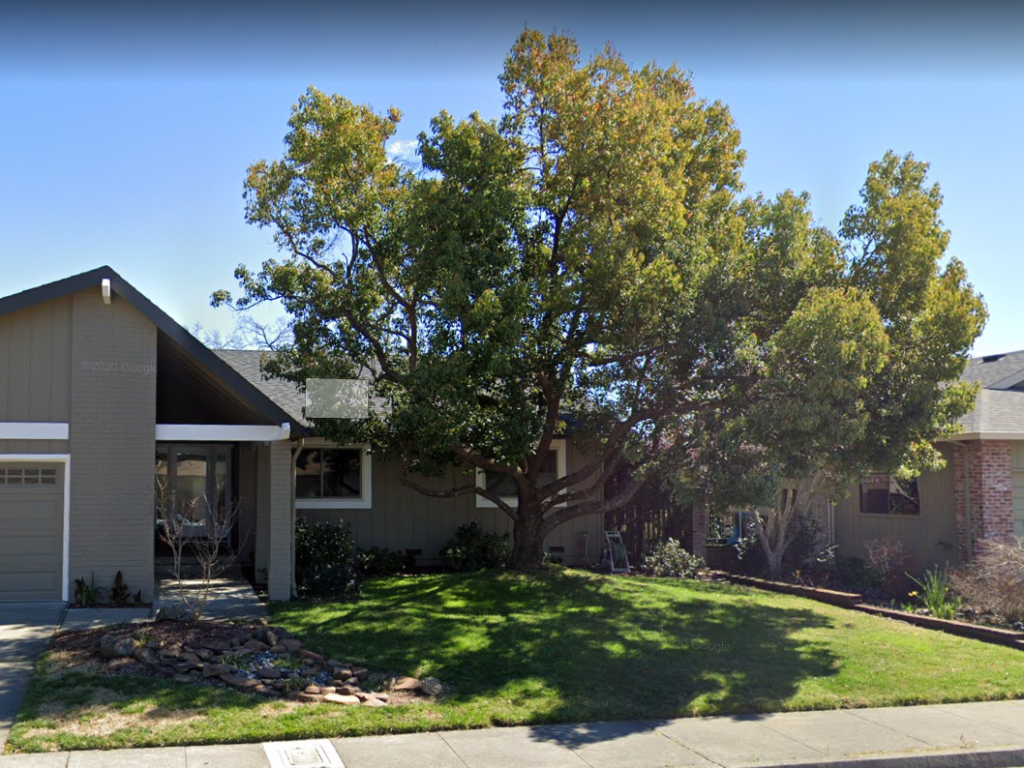
A few weeks ago I got an email from ISA-certified arborist and blog reader Curtis Short, who wanted to share his success with rejuvenating a prized landscape tree that had become severely stressed as a result of residential water restrictions. The tree is camphor (Cinnamomum camphora), which grows well in warmer parts of the country (USDA hardiness zones 9b-11b). This particular tree is about 40 years old and the showpiece of a residential landscape in the Oakmont neighborhood of Santa Rosa, CA.
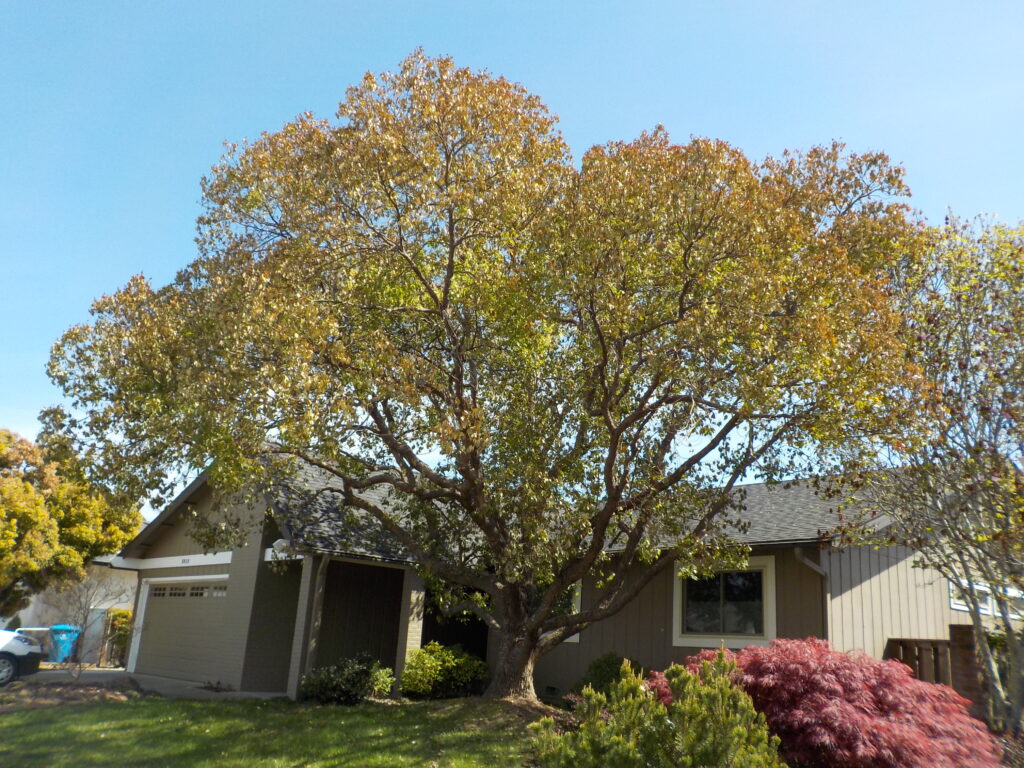
In March 2022 Curtis received an email from the homeowner (a retired meteorologist) who was concerned about the declining health of the camphor after irrigation was discontinued in mid-2021. Prior to this, the sprinklers were run daily during the dry months to support the tree as well as the surrounding lawn. The lawn, with its shallow but dense root system, recovers quickly with seasonal rains. The damage to the tree’s root system, however, has led to leaf senescence and drop.
Two other arborists had given the tree a thumbs down: one said it needed to be removed and the other said that even if the tree recovered it would never regain its original form. Curtis chose a different approach, suggesting that the homeowner could resuscitate the tree by:
*removing competition (the lawn) for water and nutrients,
*refining the irrigation system,
*applying nitrogen to stimulate new leaf growth, and
*supplying an arborist chip mulch to the landscape.

In April the homeowner applied glyphosate to kill the lawn, removed the old lawn sprinkler system, and replaced it with a 100-foot drip irrigation system near the canopy dripline and outwards where most of the tree’s fine roots are located. (For those who are curious, the system consisted of 12-inch spaced Techline emitters with a 0.9 gallon per hour dispersal rate.) Next, a layer of arborist wood chips were applied to at least a 4” depth. In May, ten pounds of ammonium sulfate (a great source of nitrogen) were applied on top of the chips and watered in.
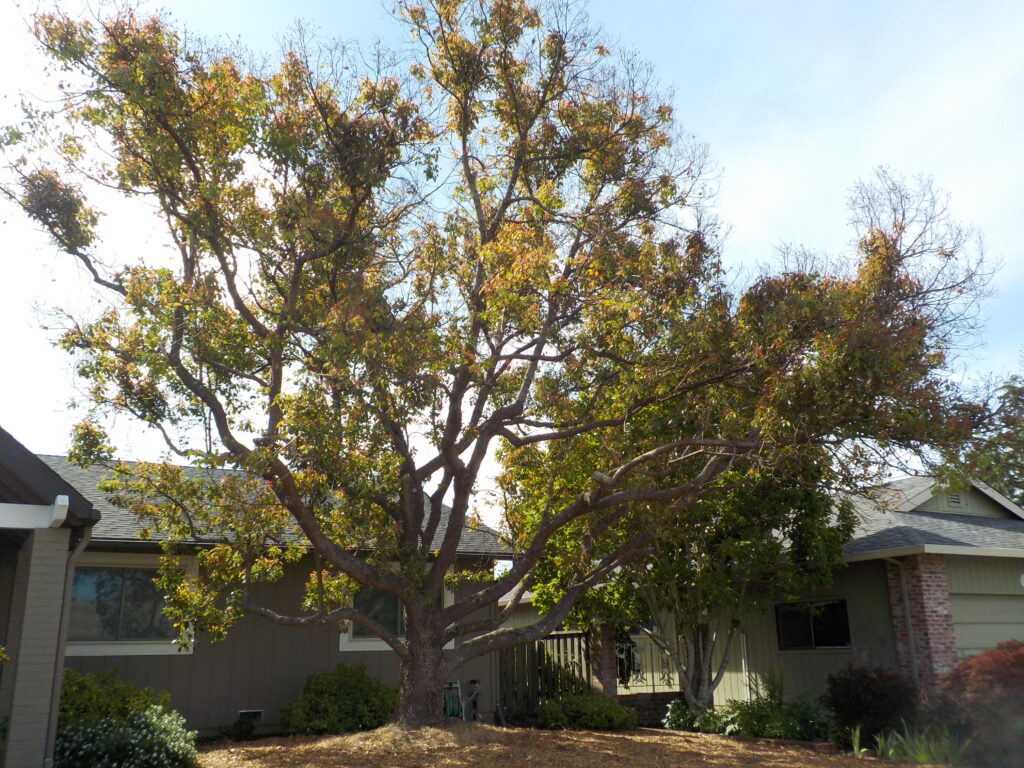
The homeowner’s irrigation plan departed dramatically from the original daily watering routine. Being a retired meteorologist, the homeowner was naturally interested in collecting data. The original two lawn stations each put out 45 gallons per day, for a total lawn water usage of 630 gallons per week. With the new drip irrigation system, irrigation was limited to one 35 minute application per week, with a total weekly water use of 105 gallons.
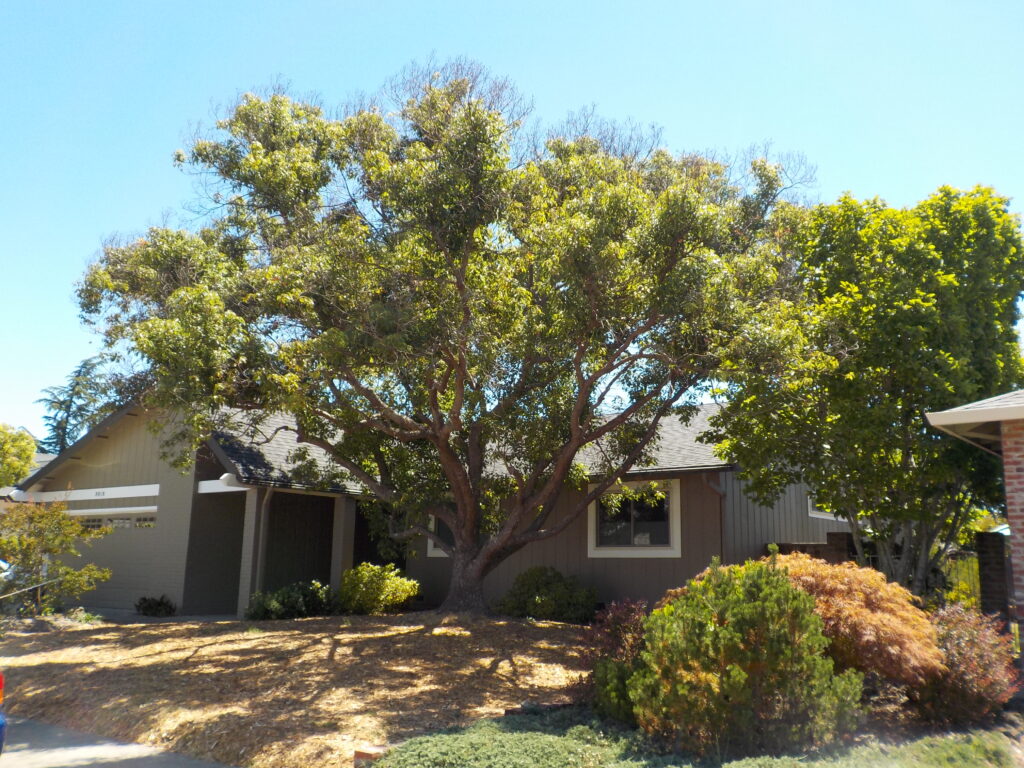
Curtis photographed the tree’s recovery as a way to reassure the homeowners that the tree was neither dead nor disfigured. The homeowners are now aware that trees cannot go “cold turkey” in efforts to reduce irrigation water use. Locating the drip system beneath the mulch layer means evaporation is reduced and that the mulch layer stays hydrated, supporting its population of mycorrhizae and other beneficial microbes.
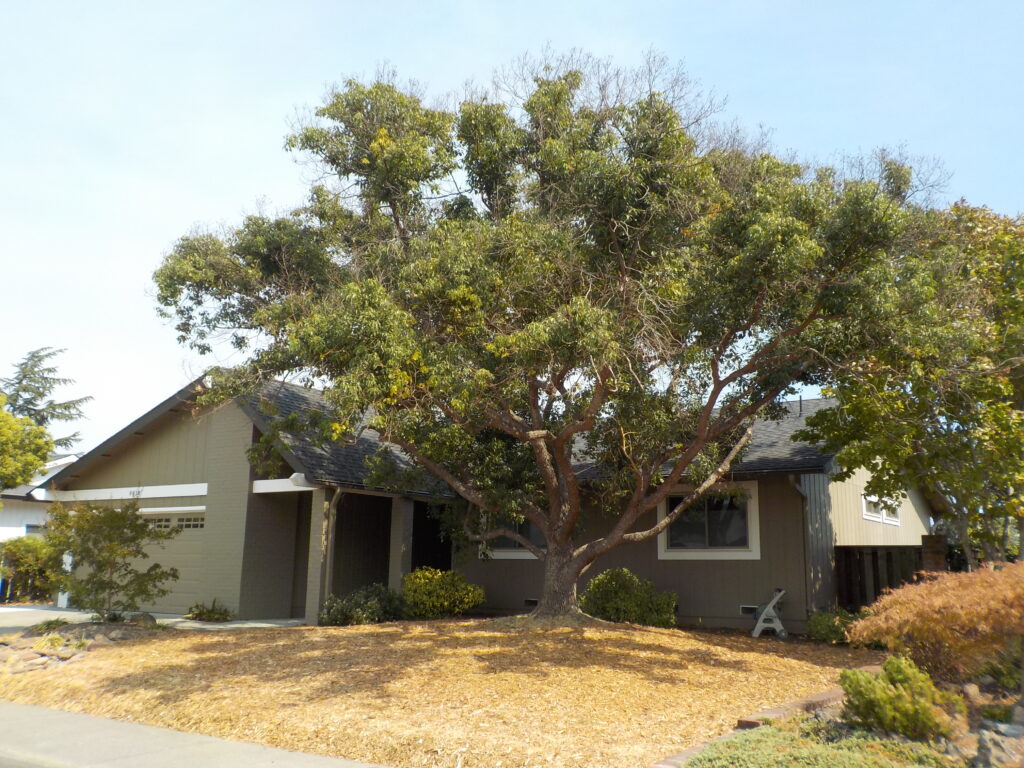
I appreciated Curtis sending me this case study as we all face the likelihood of hotter temperatures and possible water restrictions. Reduction of water-hungry ground covers, judicious use of water, and a living layer of arborist wood chips are key to helping our landscapes survive.
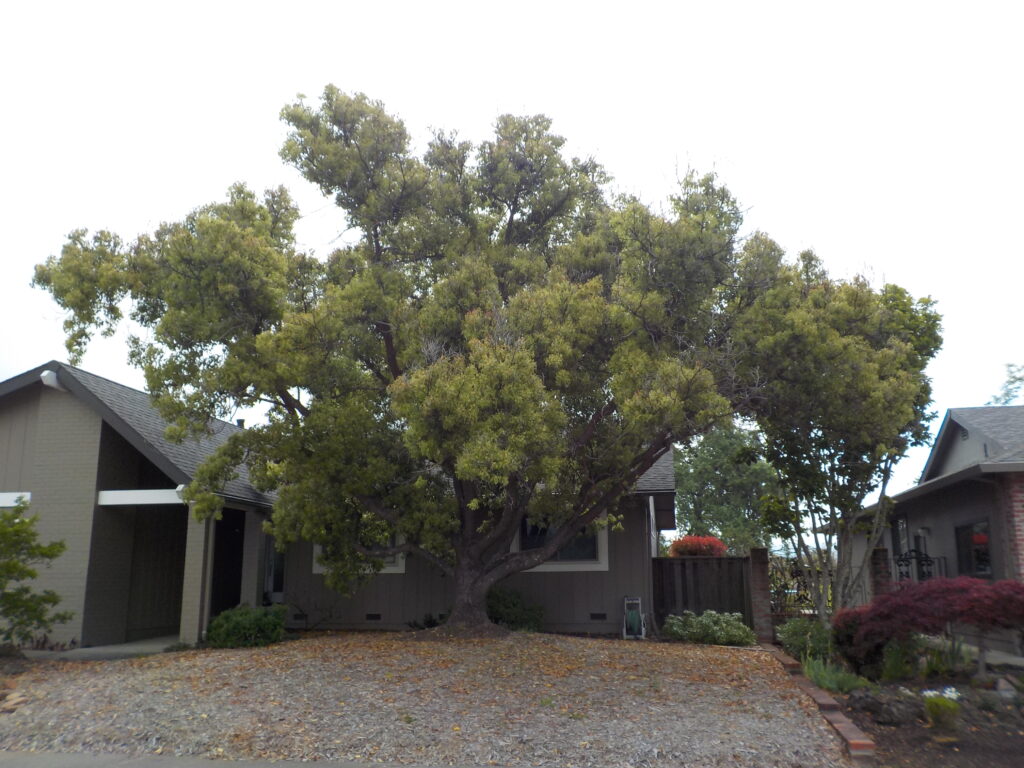

May 2019 
March 2022 
May 2023
In fire-prone Santa Rosa, a big tree draping over the home is not the best situation. Any homeowner would want to save such a gorgeous heritage tree. But if you were designing a new landscape plan in this part of the country, you’d want a tree that big at least 100 feet from the house, with a patio or walkway between. We need to plan the right plant for the right place, and account for the mature size of what we are putting in.
The comment about wildfire precautions is so important. Thank you.
If you look at old pictures of fires in santa rosa, you’ll find most of the trees still standing and the houses burnt down. The types of wind driven fires that decimated the communities there are not stopped by the removal of a tree in the front yard. That tree isnt ladder fuel in a tight residential area.. the houses are. If you were making that argument for a rural area sure doing fire abatement is great practice.. but it doesnt make as much sense for dense residential.
Thanks bp that is what I see in the Santa Rosa pictures and LA pictures. It seems to come down to how much water is in the tree. no water for months and it will burn. Trees around irrigated landscape do not seem to burn, but the dry as a bone houses sure burn. These fires are terrible but these fire districts are not helping much. We need to fire proof our houses.
Great post — it’s so helpful to get this info as data, not just anecdote! And kudos to all for thinking through and executing a smart approach.
Is the ammonium nitrate meant to help stimulate microbial activity in the arborist wood chip mulch layer or to provide nitrogen to the tree? Extra nitrogen is generally not recommended for stressed trees, correct?
To clarify, it’s ammonium sulfate – ammonium nitrate is not available to homeowners. The nitrogen benefits both the mulch flora as well as the roots. There’s no physiological reason why nitrogen application would harm stressed trees. It’s the most limiting nutrient and its application was crucial to provide this nutrient for new leaf growth.